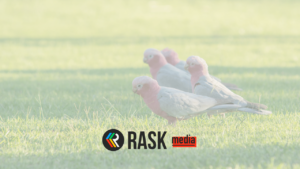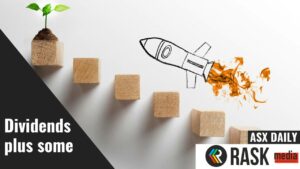Welcome to this week’s Rask Investor Club market report, where I help you dissect ASX and global investments, make money, learn & invest better.
My emails are accompanied by a recent episode of The Australian Investors Podcast, Australia’s top expert investor podcast. If you haven’t already, you can click these links to subscribe to the series: iTunes, Google or Spotify. You’ll get some of my latest stock ideas every week.
Alternatively, why not sit back and watch the video version on Rask’s YouTube channel? This week Dr Anirban Mahanti & I share our screens as we walk through the results.
CBA’s cash bonanza: why it’s not enough for this investor
Last week, I wrote to you in this column about the disruption being caused by the likes of Afterpay Ltd (ASX: APT), Square Inc (NYSE: SQ), and the move towards modern payment solutions from the likes of Apple Pay and PayPal’s Venmo.
This week, Australia’s largest money business, Commonwealth Bank of Australia (ASX: CBA), handed in its report card. Here’s what the media saw:
- Profit up 19% to $8.65 billion
- A final dividend of $2, taking the full-year payment to $3.50 (up from $2.98 last year)
- A $6 billion share buyback, returning capital from recent sales of non-core business units
Overall, it was refreshing and reassuring for investors to see this type of bounce-back in a Big Four bank following the first round of brutal COVID lockdowns last year.
In truth, however, there was a lot more to the result than meets the eye…
While CBA seems to be growing faster than the banking market, or ‘system’, with business, residential and other lending marching forward, it’s still growing quite slow overall. Revenue was up just 2%.
Exclude the impact of lower impairment expenses (for fewer expected bad loans), and profit was just about flat too. Accounting for bad debt can cut the income statement both ways — it just so happens this year it was a positive.
Further, thanks to selling some ‘good’ businesses to fund its (expensive) buyback, CBA is now a more focused bank. However, this also means it could have lower non-interest income going forward — the money made from things like funds management and selling insurance.
This comes at a time when net interest margins are being squeezed. If interest rates rise, its net margins should widen — however that would come at the expense of higher bad debts. It’s always give and take in banking.
Finally, unaffordable house prices, a still very fragile economy and increasing competition are longer-term concerns that linger.
Opportunity is on the income statement, risks are on the balance sheet – Mary Manning
A few years ago, Mary Manning joined me on The Australian Investors Podcast to talk about her story analysing banks. She said ‘opportunity is on the income statement, risk is on the balance sheet’, or something to that effect.
If you take that simple approach to analysing a bank’s report, you can begin to untangle the 100+ pages of jargon and complex financials.
In CBA’s case, we can see once-off shots-in-the-arm boosted this year’s result.
But selling businesses and reversing impairments for bad debts only get you so far down the road before sustainable growth has to come from somewhere else.
Let’s wrap some numbers around this…
A quick CBA valuation
If we assume CBA’s $3.50 fully franked dividend is sustainable and grows at 3% per year, here’s how a quick dividend discount model (DDM) — watch my DDM valuation tutorial here to learn more — shakes out…
Please note: a $3.50 fully franked dividend is actually $5 after all of the tax benefits for eligible Aussie shareholders. Meaning, I’m using gross dividend payments for my DDM…
If you want an 8% expected return (“discount rate”), this simple CBA valuation is $100.
If you want a 9% expected return, the valuation is $83.
If you demand a 10% return, you would have to buy CBA shares at $71.43.
This is a very simplistic valuation. One that could prove to be wrong. And it’s using some crude assumptions based on an old Wall Street modelling technique that values investments based on the income they produce.
But honestly, if a company is growing its revenue at only 1% or 2% per year, income from the investment is probably the only real reason to buy the stock.
What would I do?
I’m not betting against CBA. I think it’ll still be around for many years. And it’s the best Big Four bank, across just about every metric I use.
That said, let’s take it back to first principles.
Here’s what I said when I spoke to David Koch for the very first time on the telly and I was asked about banks:
If all you seek is franking credits and dividend income, just go and buy the BetaShares A200 ETF (ASX: A200) or the Vanguard Australian Shares ETF (ASX: VAS).
Both ETFs offer exposure to 100+ Aussie shares, including the banks, resources companies, and even some tech businesses. And investors can still get franking credits.
Importantly, by buying an ETF like those two, you are spreading your investment across 100+ companies. In other words, you wouldn’t be relying on one bank, in one market, with rising competition, for your long-term income goals.
Sounds like a no-brainer to me.
But before you do anything with your money, you should:
- Watch this week’s episode of The Australian Investors Podcast, where Dr Anirban Mahanti and I talk tech, CBA & Elmo Software Ltd (ASX: ELO)
- Learn about the Vanguard Australian Shares ETF (ASX: VAS) or BetaShares Australia 200 ETF (ASX: A200) on Best ETFs




